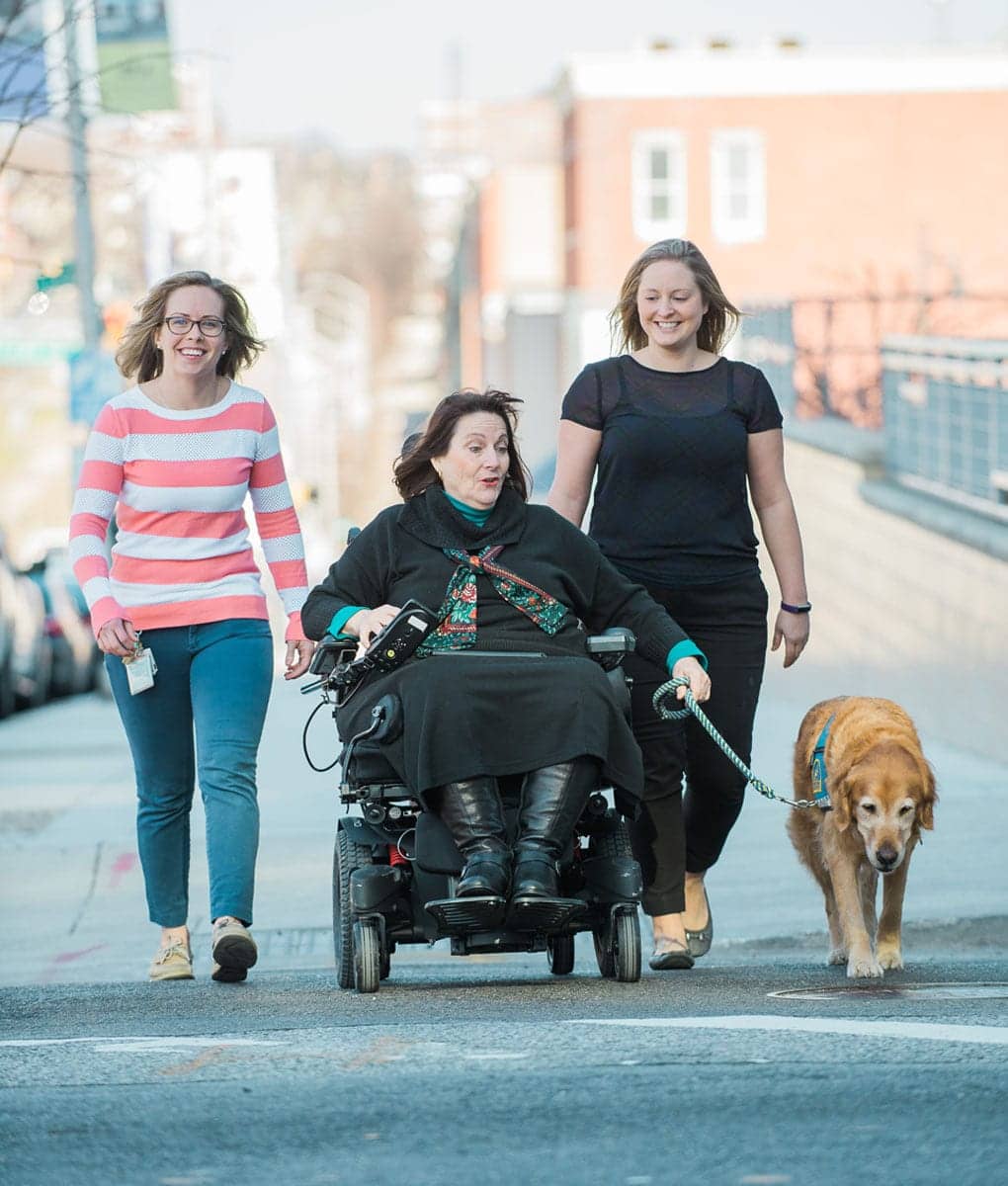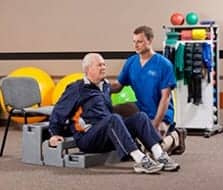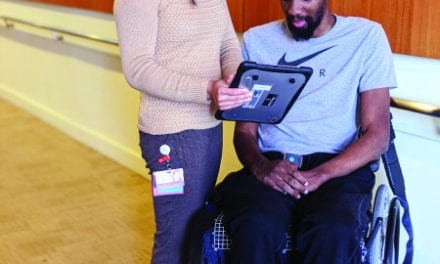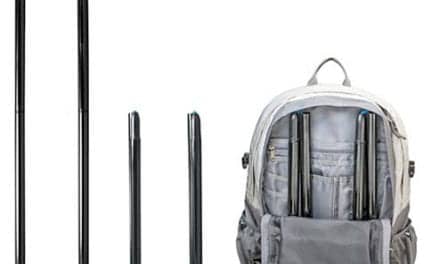by Meredith Budai, PT, DPT, ATP/SMS, CRND, and Sarah Murdoch, PT, DPT, ATP
Prescription of a manual or power wheelchair can be a gratifying and life-altering event for the end user and the seating clinic team. It is best to ensure that the client is well-educated about the types of equipment available and how to safely and effectively utilize the equipment for an optimal outcome. When rushed or done inappropriately, it can have negative effects on the client’s independence with mobility. This can be a timely and laborious task. However, when done right, it can truly improve the quality of life for the end user.
Manual Wheelchair Training
When prescribing a manual wheelchair for a client, the training process can be overwhelming. Training begins at the initial evaluation during device selection. Once prescription of a manual wheelchair is recommended, the frame type needs to be specified. For purposes of this article, we will discuss ultra-lightweight manual wheelchairs, which are described as being no greater than 30 pounds (transport weight). In addition to weight, an ultra-lightweight manual wheelchair is considered different from a lightweight manual wheelchair due to features only associated with the K0005 code (as per Medicare). These features include an adjustable axle (vertical and horizontal), camber, and customized seat to floor height. A new wheelchair user will also require education about the differences between a rigid wheelchair frame and a folding wheelchair frame.
A folding wheelchair frame has a cross member allowing it to fold in the middle bringing the sides together in the folded position. A rigid wheelchair frame has a solid axle prohibiting it from folding. The decision between a folding versus a rigid frame should be carefully decided based on the user’s transportation accessibility, self-driving ability, pain, muscle tone, transfer style, and anatomy. Ideally, the new wheelchair user will have the opportunity to trial multiple frame types during their initial evaluation. Equipment trials should include demoing equipment over a variety of surfaces (both indoor and outdoor) and over varying grades. If able, the client and the equipment supplier will arrange a time to use a demo frame of choice in the client’s home environment to make the most educated decision for their selected equipment. The ideal mobility system for an active wheelchair user is durable, lightweight, and customized to the user’s individual needs.
Breakdown Skills and Propulsion
It is recommended that the manual wheelchair is delivered to the end user in clinic with the entire evaluating team. During delivery, the wheelchair supplier and physical or occupational therapist should educate the client about pressure reliefs and breaking down the wheelchair for transportation. The most effective pressure relief is an anterior trunk lean. Specific breakdown skills include removing the wheels, folding the wheelchair, and donning and doffing the seating system (ie, cushion and backrest). Necessary recommendations should be provided for transferring to and from the device in preparation to begin propulsion training. After fitting and modifying the wheelchair to ensure optimal fit and access to rear wheels, the client is ready for wheelchair propulsion training. Training should also include higher-level skills such as wheelies, curbs, car transfers with associated breakdown, safe falling strategies, and righting techniques.
There are multiple styles of wheelchair propulsion, each of which have different short- and long-term effects for the user. The semi-circular arc is the most efficient and reduces risk of overuse injury. During this pattern, the user pushes the wheel forward their maximal reach, releases the wheel rim, and reaches for the rear-most portion of the rim while maintaining the shoulders in a neutral alignment. The arc pattern, in which the individual stays on the rim for the forward and backward motion, is the most widely used pattern by manual wheelchair users. This pattern is inefficient, causes friction on the return/recovery phase, and causes increased strain on the shoulders.
Higher-Level Skills
Once a client is capable of propelling safely, he or she should be educated about higher-level wheelchair skills. Typically, it is best to begin with static skills including a wheelie in place, followed by a wheelie progressing forward and backward. Once a person has mastered these skills, it is time to begin training on ascending/descending curbs. A gait belt can be applied to the axle to guard the client while allowing him or her the freedom to trial these complicated tasks. Curb negotiation training begins at 2 inches and progresses to 8 inches, which is standard curb height. To descend the person can either propel backward or forward in the wheelie position. Learning to navigate a curb is a practical skill that is required by wheelchair users for full access within the community. If skill and time allow, consider training the person to utilize escalators and to right themselves from a displaced position.
Power Wheelchair Training
Powered mobility training can vary based on the drive control being utilized. It is important to evaluate the client to determine the most appropriate drive control for independence with driving. There are a variety of different devices, such as joysticks, head arrays, chin controls, and switch control, to name a few. Proportional drives are the most intuitive, as they go in the direction the client moves the joystick with speed corresponding to joystick displacement. The other types of drive controls can take more time to learn and are more specific to the drive type, but can be just as efficient for independence with powered mobility. A key component to powered mobility, no matter the drive type, is the programming. There are a lot of parameters that can be changed in the programming to help achieve independence. If not programmed optimally, even with the correct drive control chosen based on the client’s functional abilities, the client may not be able to achieve independence with driving.
Learning Style and Navigation
Once the drive type is determined, training is tailored to the client’s best style of learning. Typically with powered mobility, less instruction and cueing is preferred to allow the client to learn how to use the device. Initial instruction is provided about how to use the device, and then it is the client’s turn to figure out how it best works for him or her. Providing too many cues can be confusing and distracting while learning to drive. Large, open spaces are ideal in the beginning, as available, in order for the client to have the most space to practice in. This allows the client to learn how to drive in all directions without the worry of running into anything. However, as they learn how to navigate, it is important to narrow their space and allow them to negotiate around obstacles and tighter spaces so they are comfortable in any setting with the wheelchair. Home set-ups can be the most difficult to negotiate at first, so working on negotiating close to mat tables, desks, or other furniture can help ease the transition of the power wheelchair into their home environment.
Once the user is trained in indoor, smooth, and controlled environments, it is important to also train in outdoor settings such as going over ramps, uneven terrain, and negotiating crosswalks in a timely manner. These environments can also show the team if any additional supports are needed to maintain balance, head control, or other aspects of the client.
Secure for Transport
Another key component of training is transportation. Vehicle spaces are typically more tight areas and require precise negotiating in order to be in the appropriate position for transport. The client and caregivers should be comfortable with negotiating the vehicle in the wheelchair as well as being able to provide caregivers with an explanation about how the wheelchair should be secured to the vehicle and the client secured to the wheelchair. Depending on the vehicle, the client may need to recline or tilt the power wheelchair in order to clear their head to get into the vehicle.
Virtual Reality Training for Mobility
Technology is evolving, and virtual reality is becoming a part of determining appropriate drive controls and training. One of the limiting factors in determining a device and training is the demo equipment availability. Every client has different needs in regard to positioning and their functional ability that not all demo equipment can accommodate in the clinic setting. With the ability to utilize virtual reality, a client can be appropriately positioned in other ways besides being in the power wheelchair to optimize positioning and their functional capabilities. With optimization of these factors, the client can train using different drive controls with a virtual reality system to determine the most appropriate one. This newer technology could decrease the amount of demo equipment needed in a seating clinic and allow for clients to be assessed in a more ideal situation.
What Does This Mean?
In conclusion, device selection and training is important for both manual and power wheelchair users. Training should be done in both indoor and outdoor environments for not only mobility, but also how to transport and break the wheelchair down. The training should also be tailored to the client’s learning style for best outcomes. With the appropriate training, clients are able to achieve independence with mobility in not only the clinic setting, but most importantly, their home and community. RM
Meredith Budai, PT, DPT, ATP/SMS, CRND, is a clinical specialist at the International Center for Spinal Cord Injury at Kennedy Krieger Institute in Baltimore. She received her Bachelor of Science and Bachelor of Health Sciences in 2006 and her Doctorate of Physical Therapy in 2008 from Duquesne University in Pittsburgh. Budai has been a certified assistive technology professional since 2011 and a certified seating and mobility specialist since 2015.
Sarah Murdoch, PT, DPT, ATP, has been a physical therapist with the International Center for Spinal Cord Injury (ICSCI) at Kennedy Krieger Institute since November 2012. She received her Bachelor of Biology and Health Sciences and Doctorate of Physical Therapy from Duquesne University in Pittsburgh. Her clinical interests include functional electrical stimulation, aquatic therapy, and seating and mobility. She is experienced as a land and aquatic therapist for children and adults with neuromuscular diagnoses. For more information, contact [email protected].







A very nice article on an important topic! For those seeking free online resources to use for training, the Wheelchair Skills Program (www.wheelchairskillsprogram.ca) is one such option.
I have a new TiLite AeroT Rigid Manual wheelchair, I need training in it’s proper use —Propulsion and wheelie techniques. I live in Lone Tree Colorado (South Denver area). I could use some suggestions as to how I could access such training close to me.
Hi Chris,
Congratulations on receiving your new TiLite! Rehab Management cannot offer service referrals but my best advice would be for you to ask your primary care provider, the vendor who provided the wheelchair, or TiLite about your training needs.
—Best regards and good luck!